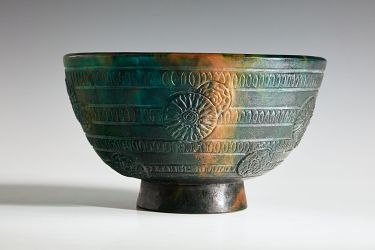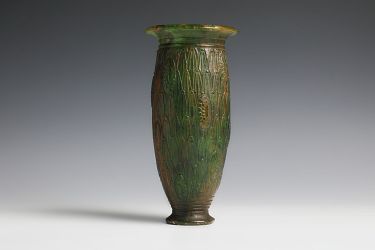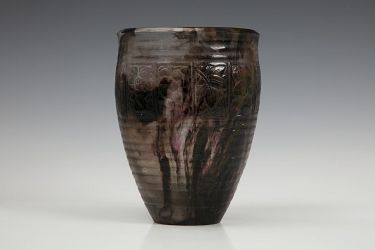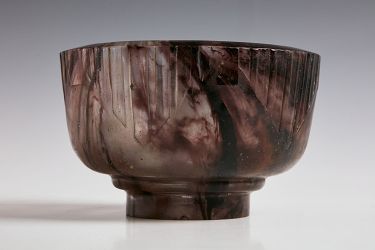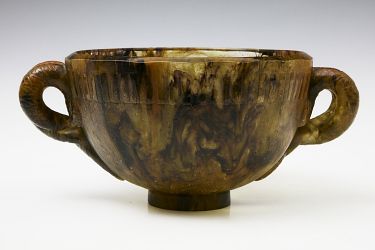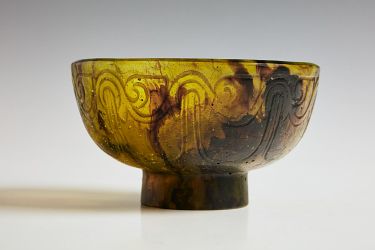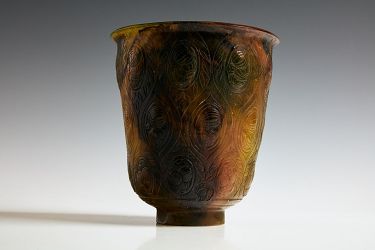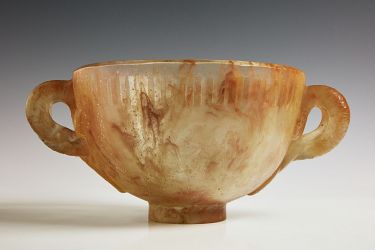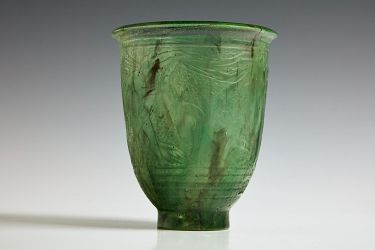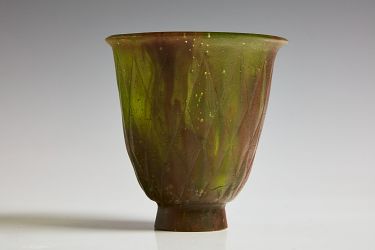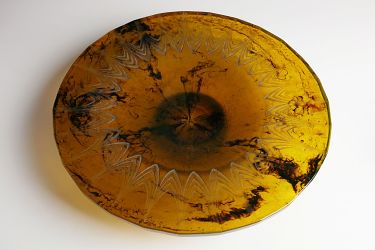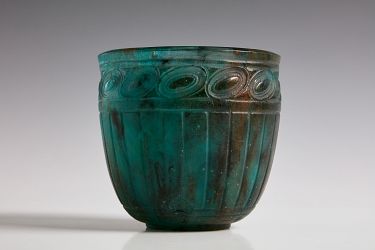François-Emile Décorchemont
Conches-en-Ouche, May 26, 1880 -- Conches-en-Ouche, February 17, 1971
François Décorchemont was born in 1880 in the family of sculptors. His great-uncle Jean-Louis Décorchemont (1796-?) made statues of the twelve apostles at the Collégiale Notre-Dame de Vernon. His father, Louis-Émile Décorchemont (1851-1921), was sculptor as well. The Fontaine monumentale d'Évreux of 1882 sculptural group is among his works.
François Décorchemont spent his early years in Conches-en-Ouche with his maternal grandfather, François-Michel Laumonier, who created religious sculptures and made church furniture. Laumonier devoted his free time to Gallo-Roman archaeological excavations in which he involved his grandson. From 1892, François Décorchemont lived in Paris with his parents. In addition to his creative work, Louis-Emile Décorchemont, the father of François taught at the École nationale supérieure des arts décoratifs de Paris. François Décorchemont applied to the ceramics department of the same school, but failed the exam and decided to take up glassmaking. During his studies at the École Nationale des Arts Décoratifs, his fellow students were the painters Henry de Waroquier and Francis Picabia, draughtsman Victor Lhuer, art decorator Maurice Dufrêne and Georges Bastard, the future director of the Manufacture nationale de Sèvres, who was be his close friend for a long time.
From 1902 onwards, François Décorchemont concentrated on the pâte de verre technique, to which he devoted his entire life.
Pâte-de-verre or glass paste was known since the early days of glassmaking. Originally, glass was not blown, but molded by casting method or using a "sand core" — soft glass threads were placed on a sand blank and smoothed over the surface of the resulting piece, after which the sand core was removed when the object cooled. For example, vessels made of glass paste were created in the ancient Egyptian times. When people learnt to boil liquid glass and invented a pipe for blowing, the pâte-de-verre technique was forgotten for a long time. The Historicism style of the second half of the 19th century encouraged artisans to study the past, rethink ancient technological methods and return to artistic traditions of the previous epochs. In 1871, the book "History of the Glass Art of Antiquity" was published, which contained ancient Egyptian and Roman recipes. It is likely that in this publication artisans learnt the recipe for glass paste and the term pat-de-verre, and the period of intense experimentation with this technique began. Henry Cros was among the first to use this technique, while Amalric Walter worked with glass paste at the Daum frères manufactory and adapted the technique for mass production.
François Décorchemont made small statuettes, bowls and cups in his father's workshop and presented his work at the Paris Salon from 1903. In 1908, he was awarded a scholarship for artisans in France and travelled to learn new glassmaking techniques. When he returned in 1910, Décorchemont built together with his father two glass fusing furnaces in the workshop and experimented with the technique over the years.
Décorchemont worked with a wide range of glass paste colors: bright, saturated tones and delicate pastel shades. He favored translucent pastes with textured matte finish. His products were covered with relief decoration in the form of plants and flowers, patterns inspired by nature, which corresponded to the preferences of the Art Nouveau era and echoed the ideas of the School of Nancy. François Décorchemont signed his pieces using a signature placed in the mussel (shell).
During the First World War, Décorchemont served in Signal Corps in Évreux. After 1918, he cast models in glass factories near Paris and worked with the firms of Galle and Daum Freres. In the 1920s, the artisan turned to almost transparent glass and geometric motifs in decoration. The 1930s were marked by Décorchemont turning to stained glass art and execution of orders for churches. He was engaged in the same business after the Second World War. Pate-de-verre technique of François Décorchemont still has not been solved until the end.
